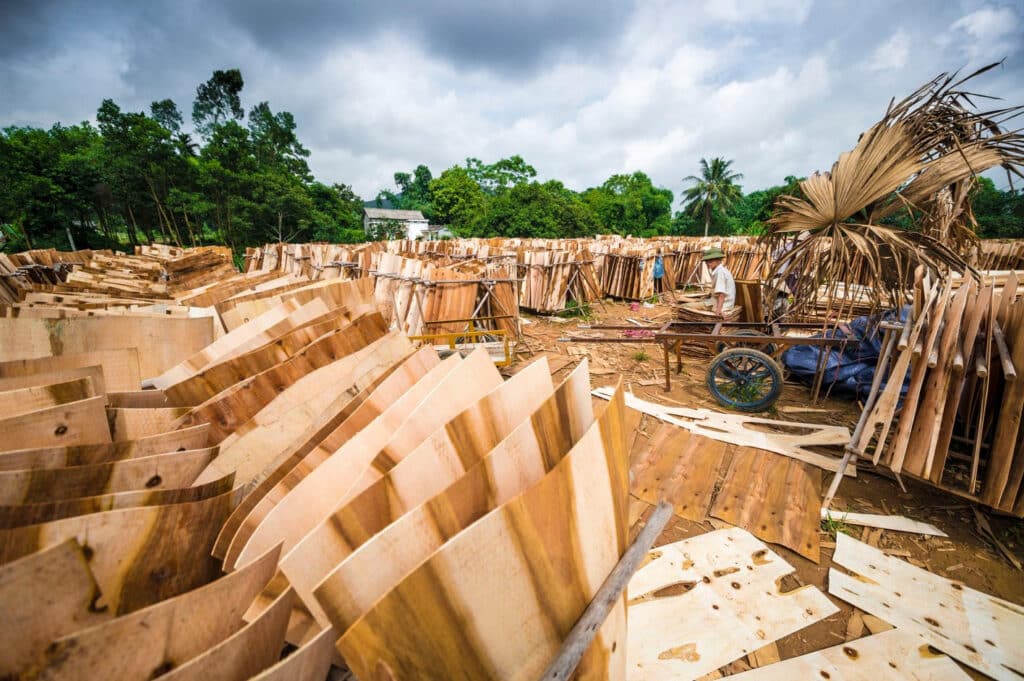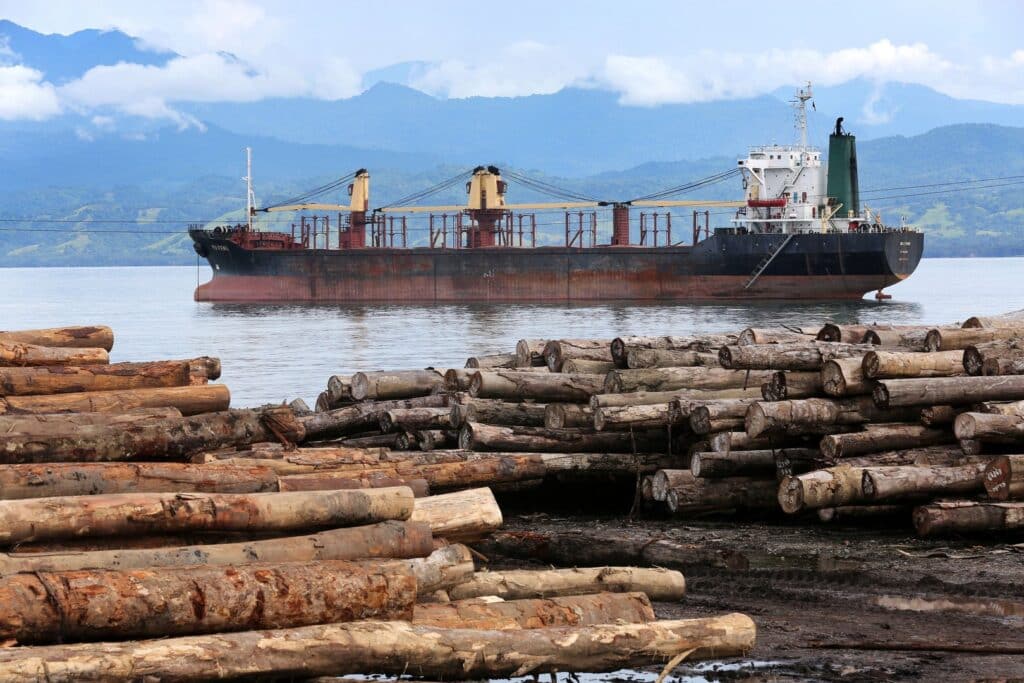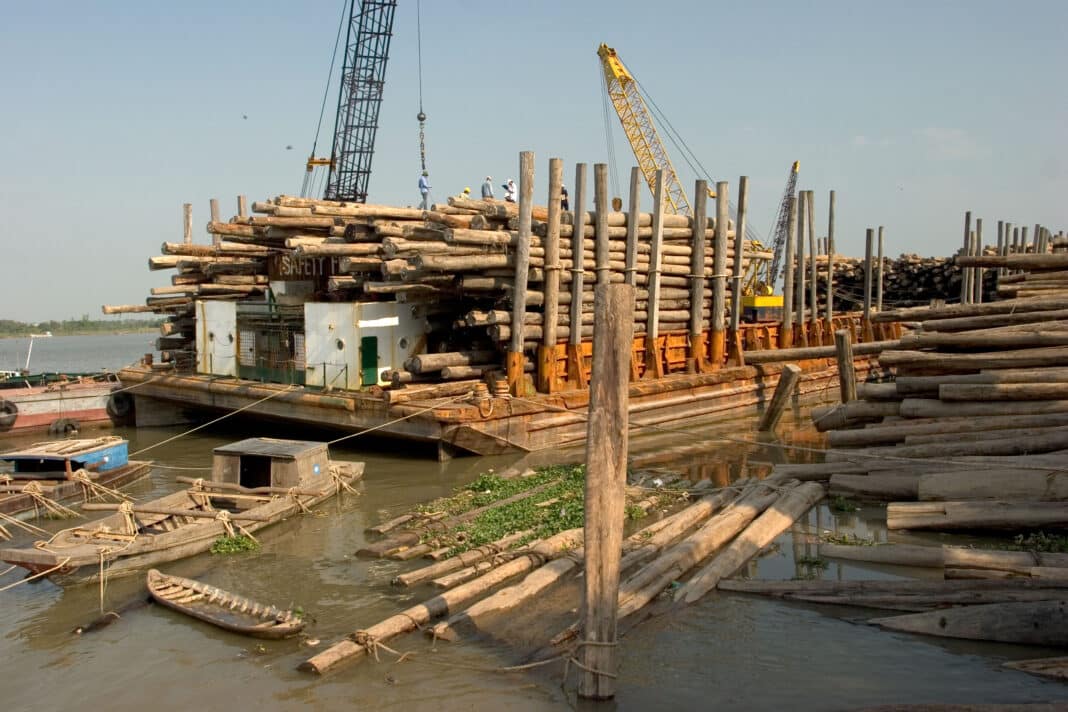Global plywood is big business, with the latest research estimating the market for ply is now US $54.2 billion (in 2022) – a figure expected to grow to US $73.3 billion in 2027 as hardwood plywood—sourced from locations right across Asia—is used in more construction applications.
Now, a multi-part series produced by Mongabay, America’s leading conservation-based news website, has unmasked the illegal trade of plywood and other timbers coming from Cambodian forests. It alleges that the plywood is processed and traded into Vietnam and China via a Hong Kong trading company and then sold into the United States as plywood cores used in engineered timber flooring through one of the US’s largest flooring companies, AHF Products.
“Over a year-long investigation, Mongabay has acquired documents and testimonies, as well as photo and video evidence, that shows Angkor Plywood (one of Cambodia’s largest timber companies) has been illegally logging timber from protected areas and violating various laws by exporting sawn logs internationally,” Mongabay said in a statement.
The allegations allege that Angkor Plywood, headed by Chea Pov and Lu Chu Chang – a Taiwanese National who previously headed the Cambodian Timber Industry Association – had “built a timber empire focusing on the beleaguered Prey Lang Wildlife Sanctuary, a nearly 490,000-hectare (1.2-million-acre) lowland rainforest in northern Cambodia.”
Cambodia’s illegal logging runs wild through the Prey Lang Wildlife Sanctuary.
Wood Central understands that the sanctuary’s flat topography and proximity to numerous transit arteries, rich mineral deposits, and formerly lush forests have made it a lucrative target for loggers and miners. Mongabay has previously uncovered logging routes and timber trails that lead back to Think Biotech (which changed its name to Holy Plantation in 2023), another company chaired by Chang that owns a 34,000-hectare (84,000-acre) concession on the eastern border of Prey Lang in Kratie province.
Collaborating with mining companies and local loggers, all the while (allegedly) bribing authorities who are supposed to prevent forest crimes, Chang and Pov has repeatedly been accused of logging protected forest inside Prey Lang, laundering it through the Holy Plantation concession, where Chang operates a “sustainable” timber plantation, and then selling it to Angkor Plywood – where it is then exported by Hong Kong registered-trading company, PAR International Holdings Pte. Ltd. into Vietnam.
Vietnam has long been a destination country for Cambodia’s illicit timber, primarily to fuel its domestic market for luxury furniture, but also serving as a transit country to China, the United States and the European Union.
“Each of Angkor Plywood’s shipments was valued at tens of thousands of dollars, amounting to hundreds, sometimes thousands, of metric tons of wood,” Mongabay said of the shipments. “The most recent shipment, from Aug. 23, 2023, was valued at $195,000 for 390 cubic meters (nearly 13,800 cubic feet) of chalk timber (Terminalia alata).”
These shipments include Grade 1 timber, the most valuable grade below luxury timber, as per Cambodia’s Grade 1-3 classifications. These timbers are often made into furniture and frequently targeted by loggers in Cambodia as luxury species have become more challenging, inflating the value of the remaining viable species.
A government source familiar with the export process, who requested anonymity due to the sensitivity of Angkor Plywood’s timber exports, said it shouldn’t have been possible for Angkor Plywood to export the range of Grade 1 species listed in the export documents obtained by Mongagaby. These species include sralau (Lagerstroemia calyculata), krakoh (Sindora siamensis), sokram (Xylia xylocarpa), pchek (Shorea obtusa) and chhlik; all predominantly found in protected areas where logging is illegal.
“Those species would be out of the question; we don’t allow this,” the government source told Mongabay. “That would be at the discretion and decision of the [Ministry of Agriculture, Forestry and Fisheries], but normally, those species would be under the protection of the [Ministry of Environment]. We made a decision a long time ago to ensure that those wood species are not cut and sold, even in the concession land.”
Why America leans on Vietnam (and China) for plywood
Earlier this year, Wood Central revealed that the US increasingly relied on Vietnamese traders (and Chinese traders using Vietnam seaports) for plywood, with imports tripling from 82,000 cubic metres to more than 242,000 metres for the first quarter of 2024 alone.

This comes amid a surge in plywood entering US ports—with the authorities reporting a 45% uptake, from 777,500 to 1,130,700 cubic metres flooding West Coast terminals—thanks to the explosion of Vietnamese imports.
The engineered timber floors in question are made of thin veneers of oak and hickory, primarily sourced from Vietnam and China; these make up the visible flooring system’s visible source, with the plywood cores coming from Angkor Plywood.

In recent years, the global plywood trade has come under increased scrutiny after environmental watchdog Global Witness found that several US flooring companies purchased illegally harvested tuan (Pometia pinnata) from Papua New Guinea and the Solomon Islands.
- To learn more about the trade of illegal timber in Cambodia and its role in fueling the trade of global plywood used in timber floors, click here for parts 1 and 2 of the Mongabay series.






